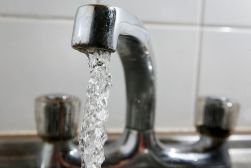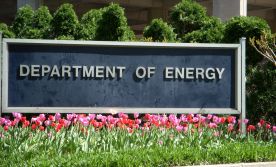EPA CIO Ann Dunkin outlines plans for smart cities grants

Environmental Protection Agency plans to set up a program that will offer grants to cities wanting to collect air quality data using large numbers of sensors, agency CIO Ann Dunkin said Thursday.
Formal plans for the EPA’s Smart Cities Challenge will come out in April, and grants will likely be around $25,000 for each participating community, though the amount of the grant may change.
“We’ll put out this challenge, we’ll select a few cities to fund, and then they will crowdsource that data — whether it’s crowdsourcing from their citizens or whether they put the data out themselves,” she said during her keynote talk at the Social Innovation Summit, sponsored by Hitachi Data Systems Federal and produced by FedScoop.
As the agency prepares for environmental protection for the 21st century, it’s placed a priority on using data — that could be agency data or data collected by citizen scientists or environmental regulators in the states or tribes.
Dunkin said during her presentation that EPA put more data sets on the federal government’s Data.gov portal than any other agency. And in September, the agency hired its first chief data scientist, Robin Thottungal, who has embarked on creating on mini data projects within the agency’s offices.
[Read more: EPA’s new CIO to focus on e-Enterprise, FITARA]
But Dunkin emphasized having data isn’t enough: EPA’s working to make it more accessible. To help crowdsource data from citizen scientists and regulators at the state, local and tribal level, it’s critical to create data standards, she said.
Now, the agency has established 25 standards with 800 elements.
“These allow us to check and integrate data from disparate programs and every program that uses our standards … improves the qualify of the data,” Dunkin said. She also said the EPA is moving toward using an “Internet of Things” platform that supports data from different sources.
Already, she said EPA is building digital programs to help citizens tap its data:
- TRI National Analysis — Previously, the EPA released chemical discharge data in a massive PDF document. “If you’re a member of the public and you pick up this 200-page report, you’re not very interested in reading that to figure out what’s going on in your community,” she said. EPA has now illustrated the data using story maps, making it easier to see information about each user’s community.
- Envirofacts — “This is where we’re making the first steps into bringing all the data in our agency together,” she said. She said citizens can log on to see information about discharges, air quality and other environmental data. She said it’s going to be a key piece of the E-Enterprise for the Environment portal, which makes it easier for EPA to communicate with regulators at the state, local and tribal levels and the public.
- Geoplatform — It provide maps of “all sorts of things across government,” like water quality in Flint or natural disasters, Dunkin said. “And these maps are interactive,” so users can drill down the information they want, she said. EPA also offers codes for a Geoplatform widget in GitHub.
- EPA Web presence — The agency is using analytics to find out what content site visitors want.
But going forward, public engagement will be critical in modern environmental protection, Dunkin said.
“We want the public to participate in gathering, sharing and using environmental data,” she said.
Contact the reporter on this story via email Whitney.Wyckoff@fedscoop.com, or follow her on Twitter @whitneywyckoff. Sign up for all the federal IT news you need in your inbox every morning at 6:00 here: fdscp.com/sign-me-on.






